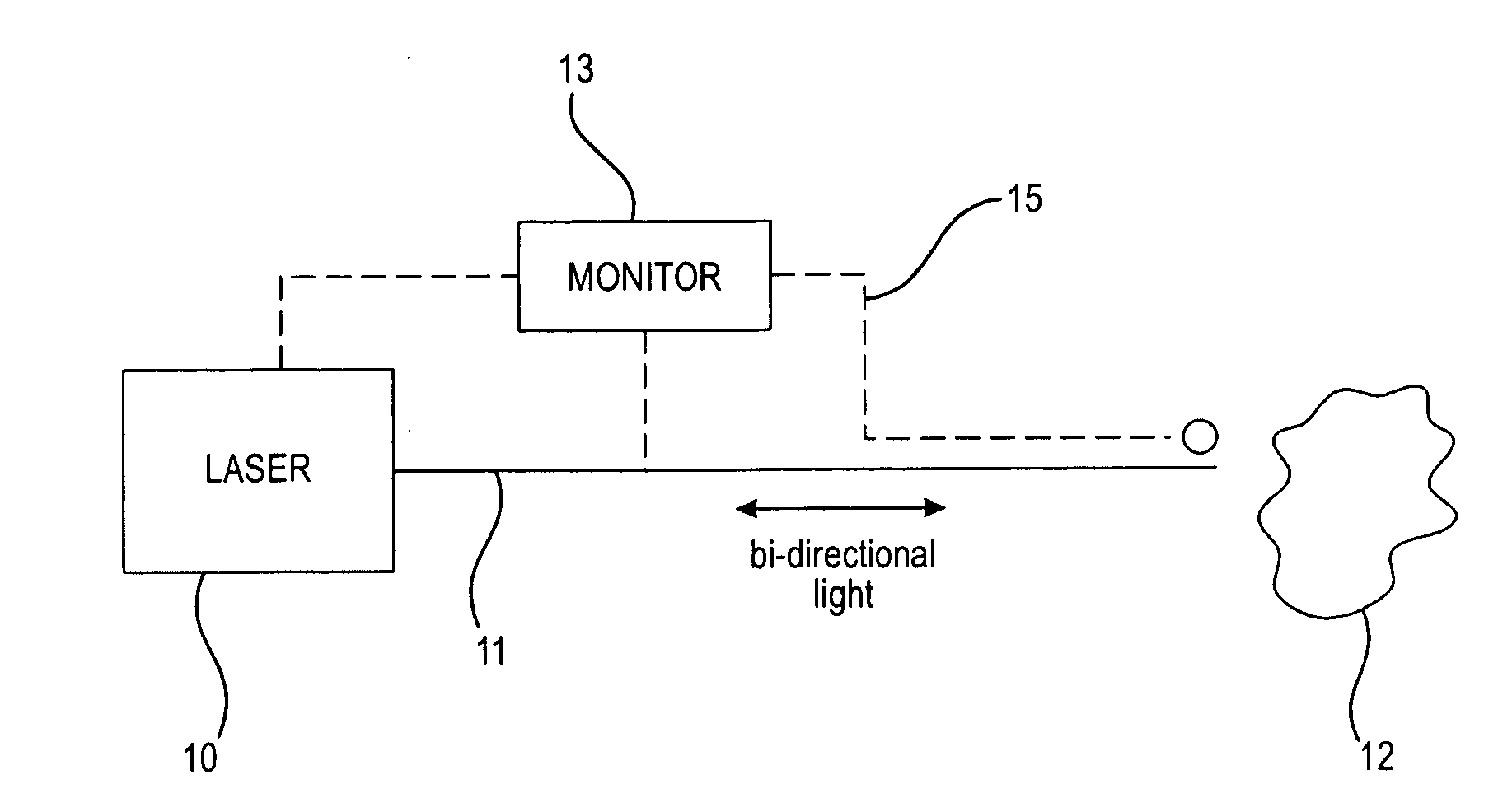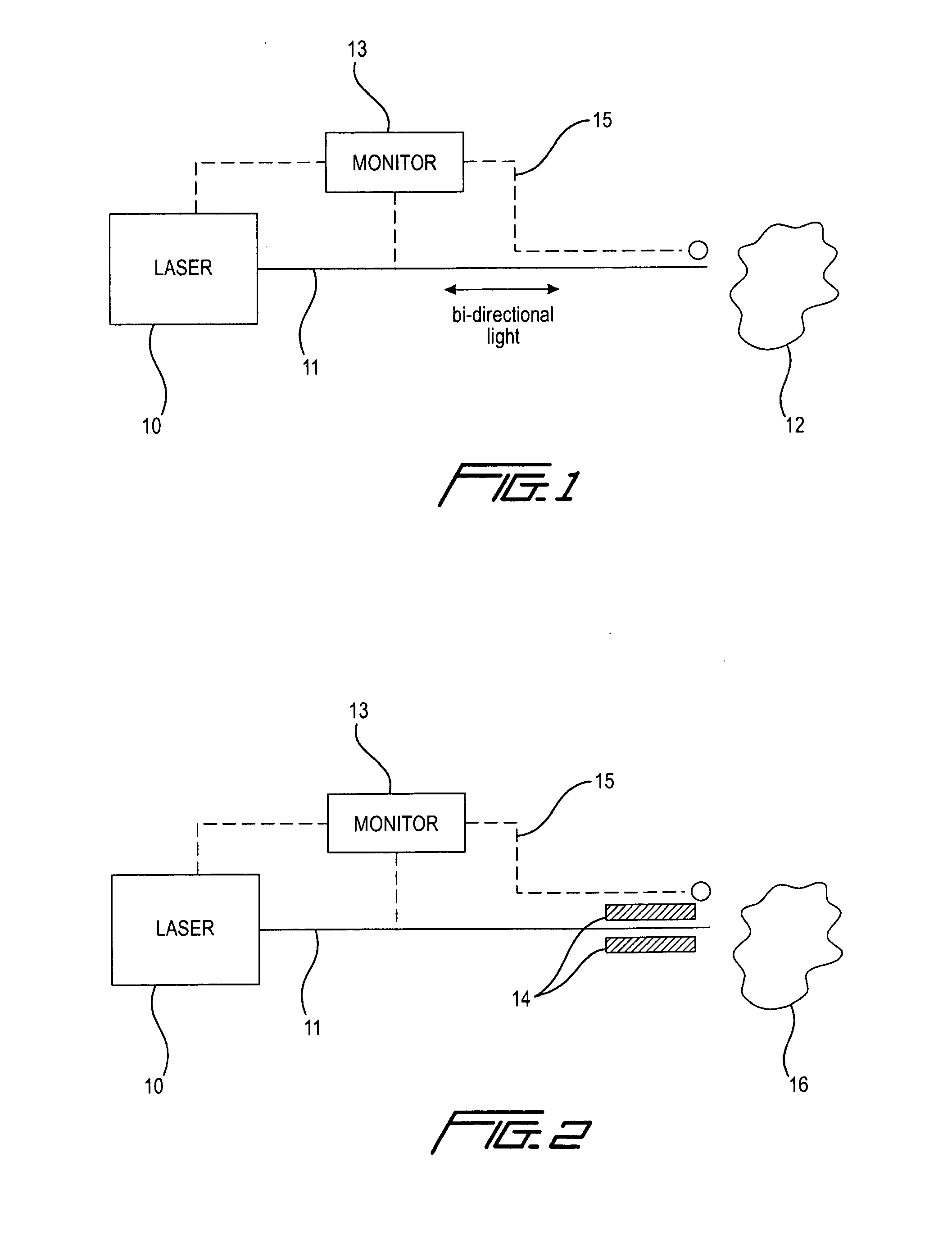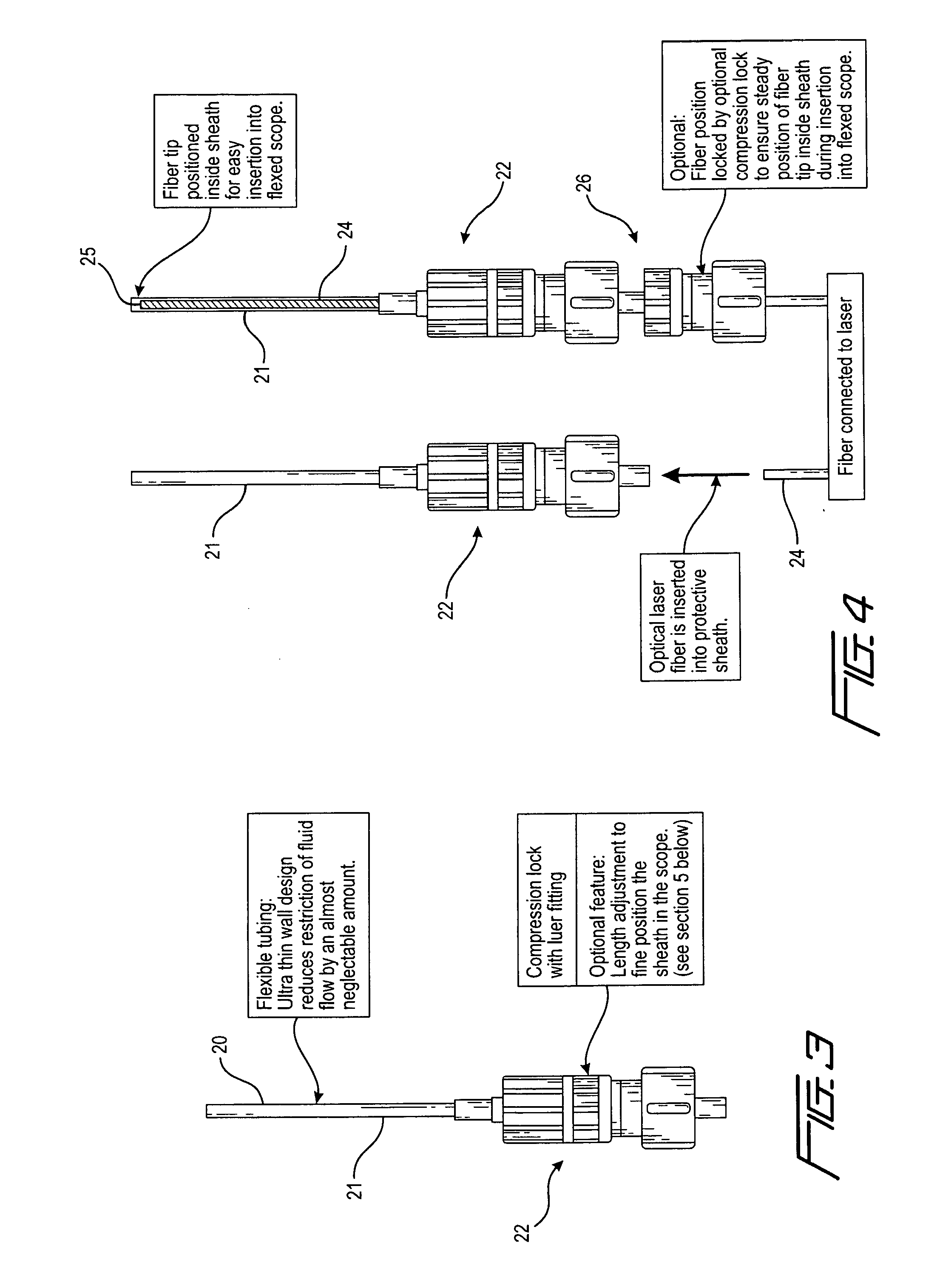Apparatus and method for detecting overheating during laser surgery
a technology of laser surgery and apparatus, applied in the direction of optical radiation measurement, instruments, therapy, etc., can solve the problems of reducing the effect of damage, and reducing the likelihood of problems, so as to achieve the effect of minimizing damag
- Summary
- Abstract
- Description
- Claims
- Application Information
AI Technical Summary
Benefits of technology
Problems solved by technology
Method used
Image
Examples
Embodiment Construction
The principles of the invention may be understood by a comparison between FIG. 2, which is a schematic illustration of an existing temperature or radiation monitoring feedback system, and FIG. 2, which shows a modification of the system of FIG. 1.
The feedback system illustrated in FIG. 1, which generally corresponds to the system disclosed in copending U.S. patent application Ser. No. 12 / 073,922, cited above, includes a laser 10 arranged to supply radiation to an optical fiber 11 for delivering energy to the treatment site. Radiation emitted at the treatment site may be in the form of infrared radiation or, in the case of actual burning, visible light. A monitor 13 is arranged to detect the radiation in a number of different ways, such as by detecting visible light transmitted back through the same fiber that supplies the laser energy to the treatment site, or by a separate detector and feedback path 15 having a sensor or detector for either radiation or temperature. When the monito...
PUM
 Login to View More
Login to View More Abstract
Description
Claims
Application Information
 Login to View More
Login to View More - R&D
- Intellectual Property
- Life Sciences
- Materials
- Tech Scout
- Unparalleled Data Quality
- Higher Quality Content
- 60% Fewer Hallucinations
Browse by: Latest US Patents, China's latest patents, Technical Efficacy Thesaurus, Application Domain, Technology Topic, Popular Technical Reports.
© 2025 PatSnap. All rights reserved.Legal|Privacy policy|Modern Slavery Act Transparency Statement|Sitemap|About US| Contact US: help@patsnap.com



